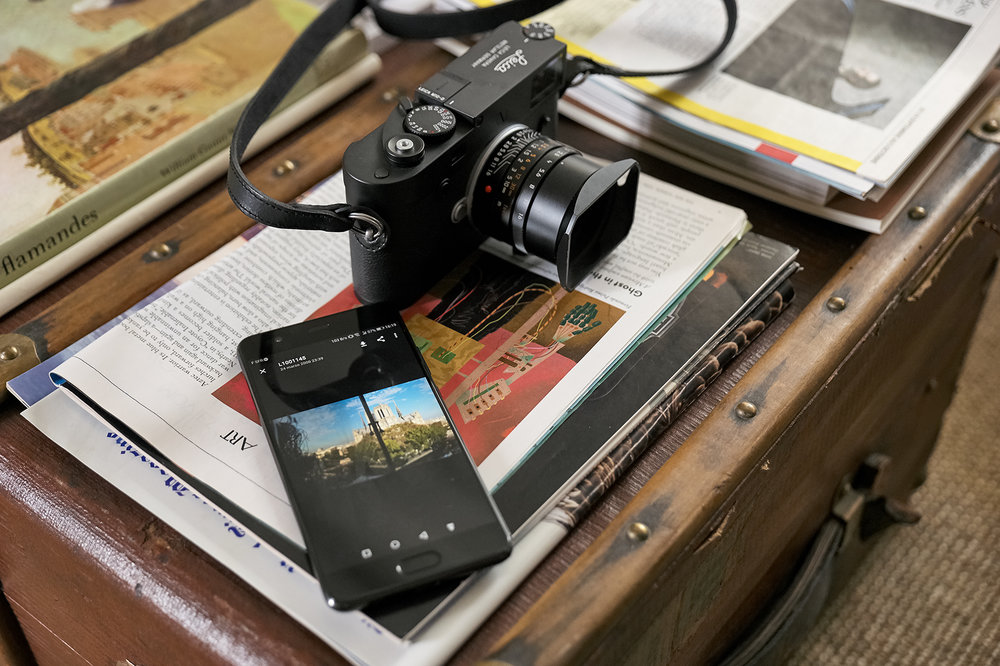
John Shingleton’s POTY, his photo of the year, was well received. Not so my choice of COTY, or camera of the year. It seems to have stirred up a bit of controversy, as was intended. I even had a private note from Wayne Gerlach who felt his comments would be so inflammatory that I would be upset if he published them as a comment. As a result of the article, his blood pressure was rising in sympathy in the heat of New South Wales. Not so, Wayne. I take all criticism on board and respect all views.
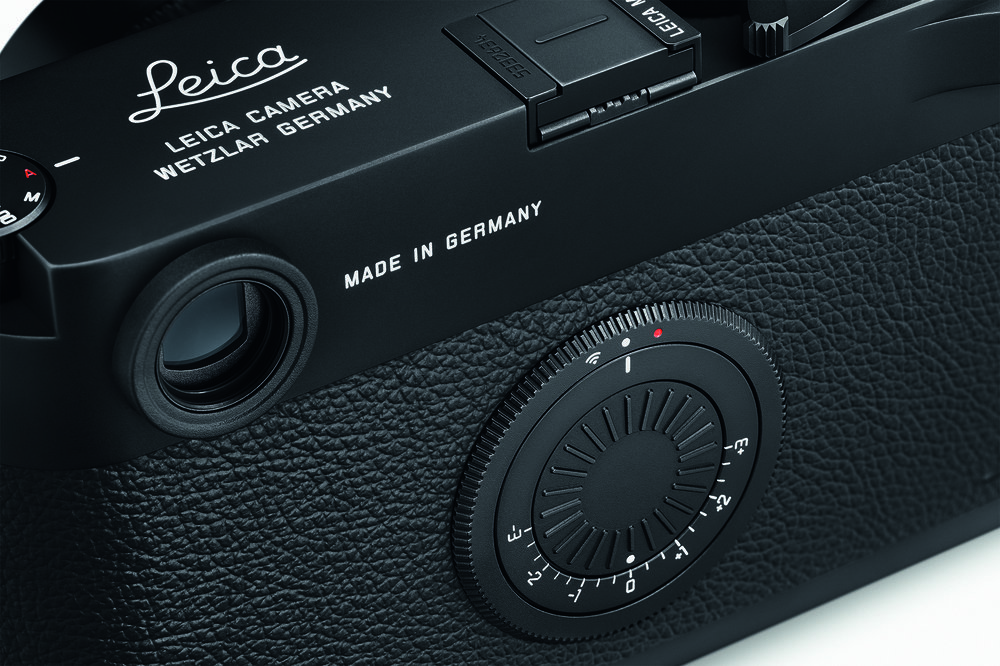
I did emphasise in this article that the M10-D was MY choice, not even the choice of Macfilos as a whole because that could involve contributors as well. It‘s an oddball choice, somewhat perverse, as readers have pointed out. But the M10- D is a camera that inspires me; and I am sure it will inspire others.
Ned Lud returns from the grave
None of this suggests that I turn my back on more complex cameras. David Babsky, in his comment to the COTY article, clearly sees me as some sort of latter day Ned Lud:
I’m your age, Mike; but I chose a hip replacement instead of “authentic” ‘hobbling with pain’; I chose a lens-replacement instead of “authentically” going blind with glaucoma, and I’ve a car (nowadays) with electric start instead of having to swing a Z-shaped handle stuck in the front (as with my first few cars).
I’m all for progress ..and I just can’t understand this need to not be able to see the pictures you’ve just shot. D’you cover your TV screen so that you can’t see the pictures, and only hear the sound? D’you go to the cinema and stop up your ears so that you’re watching “authentic” 1900s-era silent movies?
Ah! But David is right in many respects. I certainly don’t discount the advantages of having lots of options, if you need them that is. I enjoy the Panasonic Lumix G9, the Leica CL, the D-Lux 7 and the Sony RX100 VI. They are all horses for courses. I also love my X1 and X2 (particularly the X2), both of which, to a large extent, are much nearer to the M10-D concept of simplicity than the more modern devices. I don‘t bother with the poor rear screen on the X2, I just use the basic exposure parameters and am seldom disappointed with the results.
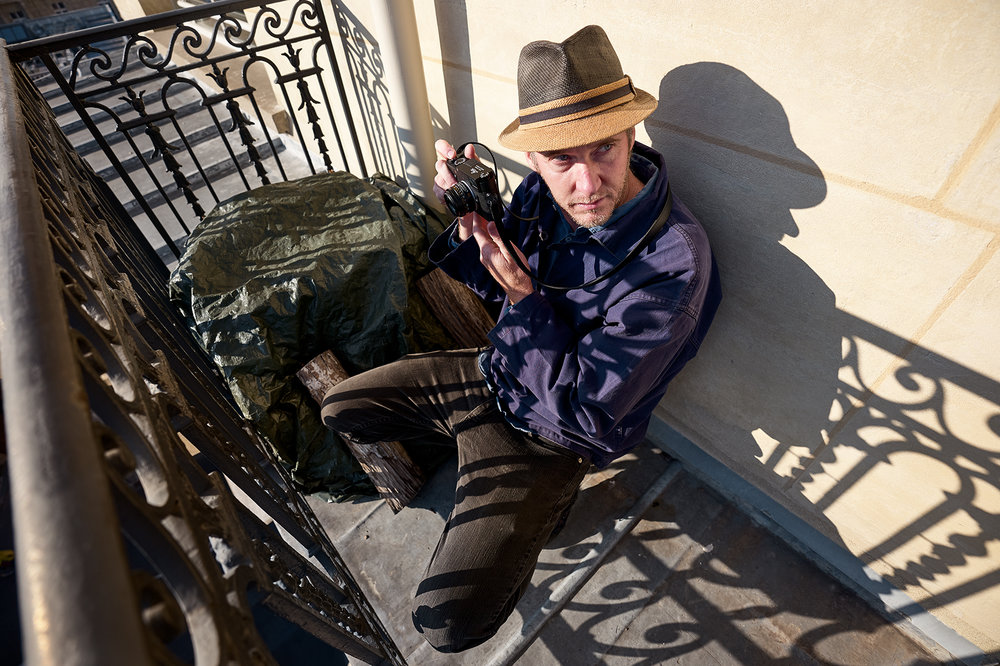
Heath Robinson or Rube Goldberg?
Wayne Gerlach has an even more strident opinion of the M10-D:
The M10-D is a silly camera. Heath Robinson on so many levels. It’s a delib- erate clunker, a DeLorean (Back to the Future, or just plain back), maybe even a GM Corsair (Unsafe at any speed).
He objects to the lack of a screen (as do most non-MDophiles) but would welcome a reversible screen, as on the G9 and other cameras, so we could go screenless if we wish. He thinks the “near silent” shutter is overhyped since many cameras these days can operate completely silently. He objects to the use of an external application to help set up and control the menu; and he hates the large exposure compensation dial on the back of the camera. He just plain doesn’t like it, so won’t be in line to buy mine when I get fed up with it.
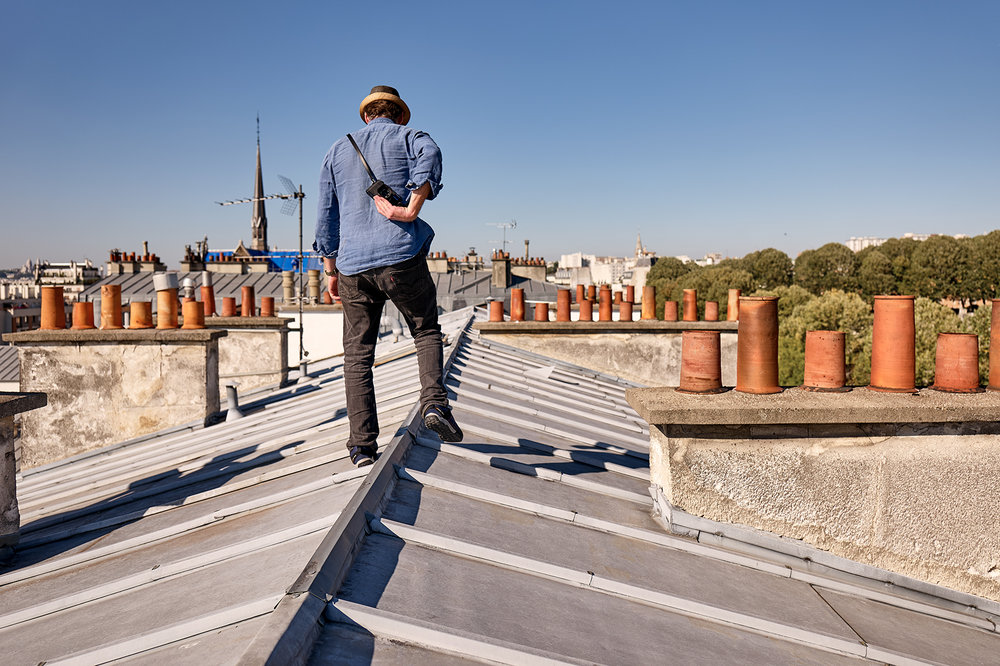
Again, Wayne’s points have merit and are by no means unusual, although I would say that I (in common with most M-D and M10-D owners, I suspect) will not use Leica FOTOS to control the camera. The app is useful for setting up ISO para- meters, but that’s about all. I could live without it, as I did when I owned the original M-D.
Anachronism or acronym?
Simply put, those who are interested in the M10-D will understand and accept its limitations. They will glory in its deliberate restrictions. For the vast majority, though (even those who otherwise love the Leica rangefinder experience), the M10-D will remain an anachronism, a wannabe throwback that fails on almost every count.
Interestingly, Photorumors ran a little survey to discover the WORST camera of the year (the WCOTY?). The M10-D came nowhere near the bottom of the pile, but I’m not sure whether this was from a lack of antagonism or a surfeit of apathy. The -D was resoundingly beaten to the depths by the Canon EOS-R with 34% thinking it the WCOTY. No less than 8% thought the Sony a7III was the worst camera(!), ahead of the Nikon Z7 at 7.7%. What about the M10-D? It was voted bottom of the pile by only 5.4% of respondents, just below of the M10-P at 3.4%.
All this proves nothing, except the importance of prejudice in any unscientific survey of this nature. It shows that every photographer has their own particular brand of poison, not to mention their own sweet spot (which usually coincides nicely with the camera they have just purchased or which they are about to buy.. For this object of desire is invariably the best camera of the year).
Choice is all
The good thing is that we do have choice. It would be a sterile world if all we had to interest us were clones of a technological photographic marvel with every conceivable bell and whistle, all competing on quite esoteric levels of complexity for our attention.
To some extent, the Sony a7III, the Nikon Z7, Canon EOS-R all follow a predicable pattern and could be accused of cloneage, yet all are excellent cameras. The Sony is generally regarded as the true COTY, despite the manure thrown on its hot shoe by readers of Photorumors. The Panasonic full-frame cameras will join the clone ball in the next few months and I will be there with the rest of them, assessing the pros and cons.
Leica ploughs its own furrow, with cameras such as the SL, the TL and CL, all rather oddball and definitely not clones of one another. And its continued dedication to expensive, hand-made, semi-mechanical rangefinders is commendable.
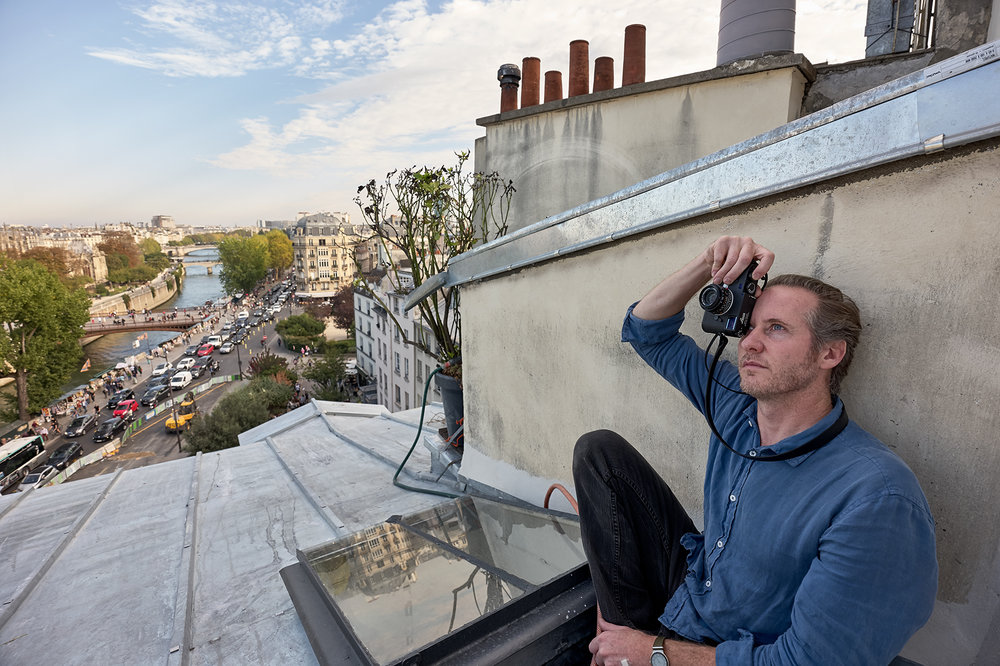
Hobbled beast
The M10-D is a low-volume product that appeals to a tiny minority of photographers. Thank goodness Leica is prepared to develop and produce a hobbled beast such as this. I will enjoy shooting with it when I am in rangefinder mode, but I will not use it exclusively. I am now aware that I have David Babsky perched on my shoulder, like some Jiminy Cricket, pointing out the benefits of the full-featured camera whenever I dare pick up the -D.
The M10-D is MY COTY, a strictly personal OTY. That’s all there is to it. It is certainly not THE camera of the year, nor would I even suggest so. All I know is that it floats my boat. Call me POTTY If you wish.
All images courtesy of Leica Camera AG (Yes, they were in the press pack for the M10-D. Don’t ask)

Stephen and Wayne have raised issues about why Barnack used a 42mm lens for the Ur Leica. I have tried to address their queries in as brief a fashion as possible below, just under their queries. All a long way from digital Leicas, but an interesting topic nevertheless.
William
Thank you for the thoughtful analysis that you have posted, William.
The design processes and parameters that went into early Leica history are indeed intriguing.
For me, it’s about three interconnected things.
Does the camera do what I want.
Do I like how it does it.
Does it make me want to use it.
Each impacts on the other, and there are many various factors that feed into some or all of the three.
The end result is something that I’ll term "fun".
It’s entirely personal, as indeed any creativity or artform must be.
Leica is right to keep things simple. You ‘make’ your image in the viewfinder at the time of taking the photograph and don’f need to be checking the images immediately. if you are so lacking in confidence in your abilities that you have to chimp to make sure you’ve got the shot then taking another shot
Isn’t neccessarily going to get it either. You should be thinking about getting the shot first time, at least that’s the goal. M10-D will make you a more skilled photographer in this way. Forces you out of your comfort zone.You’ve got digital software for damage control.
I’d prefer to do without the phone app for this reason too. I’d be in editing mode only after uploading files to my computer. But for those who absolutely must brush their teeth, shop, and do everything else on their phone too, Leica has got you covered with the app. With this caera you can go retro and use as little technology as neccessary or go all techy with your phone. It’s good to choose. In the same way, you might like CL or TL2 Leica gives you options. Nice.
You have started the New Year with fun interesting posts. I love the humourous images with this article. I can easily see someone chimping on cameras with LCD and stepping off a roof. I do not check images often and love discovering what I have captured after they have been imported into Lightroom just like getting a set of Kodachrome 25 slides back.
Five quick points from me:
First of all, to all MACFILOSophers, wishing you a great 2019 filled with lots of special image outcomes.
Regarding this article, it was fun to see it penned by t’Editor Michael. It did have its genesis (I think) after some good humoured Comments from David Babsky and subsequent satirical hyperbole that I privately emailed to Michael about his M10-D COTY assignation. (Michael and I do at times have some smiling email interchanges where we enjoy playing with words).
The surprise for me was that immediately after receiving my initial email Michael quickly drafted this follow up Macfilos article, and replied back to me that he’d like to quote some of my words. My initial gut reaction was trepidation, but that was soon overcome, so I was comfortable with him proceeding. Well, somewhat comfortable, although I did keep seeing laser dots on the shirt that I was wearing!
-To all readers, please be assured that the Macfilos family is very happy and intact. And from me I’d just like to clarify with the concluding words of my original email message to Michael about the M10-D COTY: "Vive la difference".
Dear Wayne,
Please be assured I take everything in good spirits. I think it is important to have differences of opinion and it is also fun sometimes to poke the beehive and see what comes swarming out. Over Christmas we had a beekeeper guest and I learned a lot of new things, and I shall be polishing up my swarming and honey-centric metaphors for the coming year.
The thing I find most endearing about Macfilos is the lack of vitriolic comments. Most other sites have to curate comments, something which I have never had to do. Only once (and after discussing with some regular readers) did I find it necessary to take down a comment.
Anyway, keep on commenting and writing. But let me know if you think I am getting just a little too barking in my opinions.
Why can’t we all just share OUR coty and OUR reasons for choosing it? After all, we are not justifying our choice, just saying what each of us personally enjoys. You set me thinking, Mike, what my coty is, and while I certainly don’t reach as far back as William, I realised that it is the Digilux 2 (2004). I like its rendering, its haptics, and I’m quite happy to work within its ISO limitations. I actually enjoy it much more than the X-Vario which has often been called its true successor.
Your COTY, strictly personal OTY may be be POTTY but it’s also OTT.
Ah! Another acronym. Well done! Like it.
Mike, you "hit the nail on the head" with just one phrase: "Leica ploughs its own furrow." Indeed it does, and that’s why it’s products are loved, by those among us who also wish to plough our own furrow. Besides, with few exceptions, it’s refreshing to know one is going their own way without succumbing to the pressure of the masses. Long live Leica!
Mike, Happy new year – sorry only just back in circulation after a holiday. I can only agree with you the M10 D must be the perfect camera for plane spotting also for walking on roofs with !?
I actually think Leica added too many features to the new model (I’m an owner of the original M-D). The only feature that the new one has that the old one could have used is a physical dial for exposure compensation, and even there I believe that the M10’s ISO dial should have been repurposed as the exposure comp dial and left the original (and glorious) M-D’s ISO dial as-is.
No need for JPEG, live view or any other such nonsense and while the new shutter is quieter, it wasn’t that long ago that the M (Typ 262) shutter was lauded for its lack of loudness. I can see some really caring about the slimmer M10 profile, but for those of us (like me) who started with a digital M its really a non-issue. The new rangefinder is bigger and better, just as the M 240’s was better than the M9’s, but in neither case enough to be a game-changer. Ditto the sensor, which has the inevitable better high-ISO performance and increased dynamic range, but again not enough better to matter all that much in the grand scheme of things.
I felt the same way about the M246 compared to the original M Monochrom, and as an M-D and original M Monochrom owner the only enticement to upgrading the Mono (or downgrading the ‘d to an M9) would be to share batteries, and at least for me that just isn’t enough.
I’m very glad that Leica made the M10-D and if I were buying new right now, it is clearly the M10 variant I would buy.
While I wont write reams about how think this is a brilliant idea and concept, and yes I accept it has a niche audience. However can someone please explain why this needs to hook up to your phone? If you remove the sceen as with the previous version of this, then surely you have decided to take that risk of shooting without knowing – like film days. So the inclusion of the phone to view your images seems a little at odds (is the safest way I can put it).
Weirdly I love everything about this.
This is really getting like the monks fighting over the temperature of the porridge every 7 years. Also the divided by an ocean and a common language thing is rearing its ugly head. When I send articles to Mike I generally ‘anglicise’ them or ‘de-gaelicise’ them, to put it another way, for an audience on the other side of the Irish Sea. I am sure that there are words used in Wigan that a Londoner would never use or understand.
That cat burglar with a hat annoyed a lot of people when he was used for the initial M10-D campaign, but I am sure that his pratting about on the roof tops of Paris did not put off any potential customers for this camera. As I have said before, this camera does not appeal to me either as a user or as a collector, but ‘chacun a son gout’ as they say in Paris.
My COTY was made in 1932.
William
Hi William. I do like your monk’s porridge analogy. Be assured that all is fine. My porridge analogy would be to refer to the Three Bears story where Goldilocks found that Baby Bear’s porridge was "not too hot, not too cold, but just right".
And, my COTY hasn’t even been made as yet.
It’s a Leica Q with a 40mm lens…. and it looks like the QII won’t be that when it arrives…..waiting, waiting 😉
Hi Wayne, according to Malcolm Taylor, the UR Leica had a 40mm lens, it does after all provide the nearest angle of view to what we are capable of seeing with any clarity.
Somehow between then and William’s COTY the angle narrowed to that offered by the 50mm Elmar, I am sure William knows the history better than me as to why/how that happened.
I am now on my second 40mm Summicron though, somehow, even though one has to guestimate somewhere between the 35 and 50m frame-lines (unless using the CL), I find that lens to be quite alluring, even though it isn’t a "proper Leica".
In the end though, my personal COTY is the new CL of 2018, even though when I put the 40mm Summicron on there, it miraculously turns into a 60mm 🙁
Thanks for your insights StephenJ.
Yes, would be interesting to get William’s input on the early days 40mm to 50mm Leica transition.
Also, just wondering what lens you would put on the digital CL to get 40mm equivalent with respectable f2.0 or better, and manual focus ok?
I’m starting to enjoy the 36mm equivalence of the now old X1and X2, and when I do want to play closer to 40mm I put the Fuji xf28/2.8 on a Fuji body – but that’s a slow lens and it looks like a toy (that’s shallow I know).
That is possibly why so many people regard the X1/X2/XE cameras so highly, they are very close to the magic 40mm AOV. I keep buying them and then letting them go, I think they are a bit fiddly for my sausage fingers and long sight, fortunately I haven’t really lost any money in the process.
As to your second point, I can only echo. I have thought about the 28mm Elmarit, the big problem is that a nice small lens like that (and the 40mm Summicron) have to have the converter attached and then lose quite a bit of light, it becomes f4.3 minimum.
I keep mentioning this in context with the digital CL camera, which I have learned to love… it needs a decent manufacturer (best would be Leica of course) but we now have Panasonic and Sigma, to produce a series of manual L mount lenses that cover those wider angles.
So far, they can only offer the 18mm Elmarit, which I suppose one could crop, but there is no good reason for that. The 23 and 35 are no doubt superb lenses, but the AF makes them massive, and one might as well stick with the zoom 18-56 and just put up with the size. It is a very good lens after all.
On the subject of that zoom lens, I often look at it after taking a shot and notice that I had adjusted the zoom to… yes, just about 40 ish mm… (just past the 24mm mark), it just happens! 🙂
To the points raised by Stephen and Wayne, Ulf Richter has used many pages of detective work in his book ‘Oskar Barnack, From the Idea to the Leica’ to conclude that, from among a number of possible candidates, including a Zeiss lens, that Barnack used a 42 mm Summar on the Ur Leica. This was not because he liked this point of view as such luxuries lay in the future with the introduction of the Leica I Model C and standardisation around 1930/31. It was because it produced an image circle that he could work with along with the body size, shutter slit and film stock that he was using. George Furst an LHSA member living in South Korea has produced a working replica of the Ur Leica using the 42mm Summar lens. I overheard him having discussions in Wetzlar with Jim Lager and Lars Netopil about what lens Barnack used for his famous Eisenmarkt shot. I tried the view from the famous spot now marked by a manhole cover and the only conclusion I could reach was that the field of view was somewhere between 35 and 50mm in ‘modern currency’.
It should be noted that the original UR Leica did not produce exact 24x 36mm images and that the image length was something like 37.8mm according to Richter. All of these features were developed before the Leica went into production and around 1920 Berek designed the 50mm Anastigmat which became the first lens on a production Leica in 1925. It is impossible to apply today’s type of thinking about focal lengths to what were very much pioneering efforts. The book by Richter shows evidence that Barnack continued to play around marginally with focal lengths even after the 50mm Elmar became the standard Leica lens. There are test reports by the optical workshop foreman which were sent to Barnack showing which exact focal length gave the best results. The object of this was to eliminate unsharpness at the edges as far as possible. That variation in focal length is one of reasons, along with production inconsistencies, why there is a number behind the infinity stop on 50mm Elmars to indicate the exact focal length of each lens.
I could go on a lot more about this issue, but I hope that I have given the broad outlines of the matter without boring too much on the subject.
William
Thanks for that William:
Following is a quote from Malcolm Taylor regarding that lens. It was Taylor who rebuilt the original "Ur Leica".
"The first stage of work on the Ur Leica was to look on the lens which to my surprise, and that of Dr Wangorsch, was a 42.5mm, f4.5. It was a wide field Summar (a 6-element variant of the original Zeiss Planar) that had been designed by Carl Metz. The wide field nature of this lens may explain why later photographers have been unable to recreate the exact perspective of Barnack’s original Wetzlar photographs, assuming the Ur Leica had a 50mm lens."
It is fascinating to understand that whilst we have digital this and that and we have iPhone cameras (which I really like), that there are still people around who are linked to the founders of the miniature photography industry. He knew Ernst Leitz very well, since it was he that gave Taylor the work on that Ur and other early Leicas like the 1913 cine camera.
We-ell, I’m not Stephen, but the nearest thing to fit a 40mm or 42mm f2 onto a new CL is to use the Leica 28mm f1.4, and a Leica M-to-TL adaptor.
That’d give you the equivalent of a 42mm f2 lens.
Although that’d be rather heavy at about 440 grams plus the few grams of the adaptor (that’s altogether more than the camera itself weighs) you’d have the advantage, though, of it making your wallet a good deal lighter.
Dear Mike,
I jumped for joy at your selection of the M10-D. I would agree that the decision to make such a machine will appeal to few. Presumably Leica have made the business case, as it carries over much of the M10-P this become better.
Those who will use this camera will probably maintain it in their portfolio for much longer than a more mainstream Canon or Nikon, maybe even M10…
Working in the British motor industry I am all to aware of a time when cars would go to focus groups, the hoped outcome ‘80% of people think this car is nice, this car does not offend’. These cars did not sell. Working in design I was part of a group that set out to polarise and provoke, happy with a 5% approval, where potential customer would do anything in order to have one of these cars! To be honest even 1% approval would be sufficient to fill the order books more than 1000 times over!
I recognise, respect and appreciate what Leica has done and hope the are able to appeal to a wide range of individual taste.
Cheers
Kris
Kris, that is a very good point. Most cameras these days are specifically designed camels that are supposed to do everything. No box unticked. The result is feature bloat and, often, purchase decisions made on the basis of esoteric features. The M10-D is an extreme reaction, of course, but it will sell in sufficient numbers to make the project worthwhile. Thanks for your input.
Hey, Mike, entertaining story but what’s POTTY. It’s an acronym I don’t recognise…….
Thanks, Dave. Sorry for the confusion. It isn’t an acronym at all. I was thinking potty² as opposed to potty¹ (which latter, in Britain at least, is a chamber pot designed for the untrained).
No, potty² means slightly mad in a nice sort of way — usually applied to maiden aunts and old photographers who should know better. I could have used "barking" but doesn’t fit in as a pseudo-acronym.
Thanks for the explanation, Mike. I understand. It must be another of those quaint British expressions we don’t hear much about in Nebraska. But you introduce another one. What’s "barking"?
Ooops…. barking mad, that is. My credibility and ability to choose a COTY diminishes by the minute. The expression owes something to Cockney rhyming slang but isn’t really one of the more obvious ones — it probably refers simply to "barking" as in mad dog. The residents of the East London suburb of Barking (a fine place of course) can rest easy. I now regret injecting POTTY into the equation.
Only the British can have such a fine appreciation for the varying levels of madness one can encounter, whether in Barking or some country estate. To further clarify for Dave, potty is mildly eccentric as in the example of a country squire who still tours around in his MC TC in the middle of winter with the top down, while barking refers to the type of madness that Keith Moon exhibited when he drove his Rolls into a swimming pool.
Oh dear, now there is even more to explain…